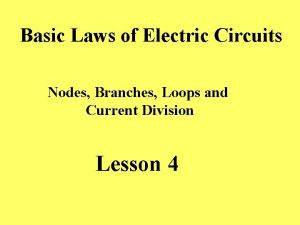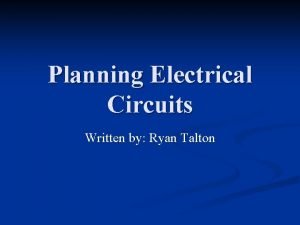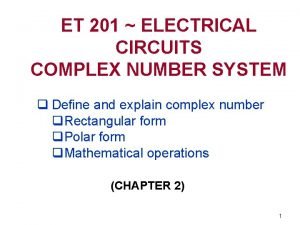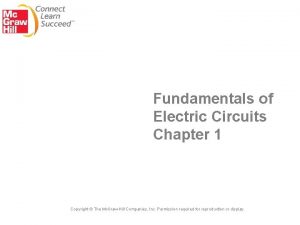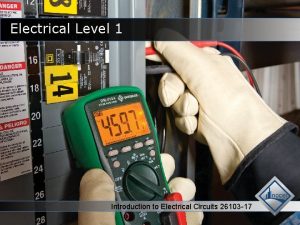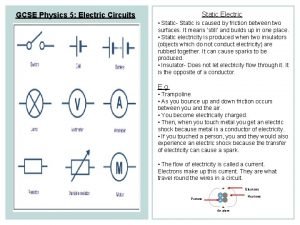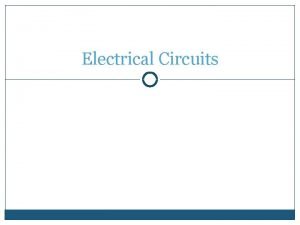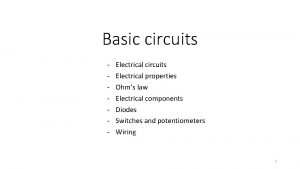Resistance in Circuits What is Resistance Electrical Resistance








- Slides: 8

Resistance in Circuits

What is Resistance? • Electrical Resistance – the opposition to the movement of electrons as they flow through a circuit. • A resistor is a device placed in a circuit which reduces the flow of electrons. • The symbol for resistance is R • The unit of measure for resistance is the Ohm (Ω)

• Internal resistance refers to how easily a material lets electrons flow through. • What materials would have high internal resistance? • What materials would have low internal resistance?

Factors that Affect Resistance • All materials have some internal resistance. • The greater the resistance, the lower the current and the material becomes warmer. • This occurs because electrons bump into the atoms in the material creating thermal energy.

There are 4 main factors which affect resistance: • Type of Material – conductor vs insulator • Cross-Sectional Area – thin vs thick wires • Length – regular cords vs extension cords • Temperature – warm vs cooler objects

Measuring Resistance • Resistance can be measured using an ohmmeter. • However, German physicist Georg Ohm discovered a relationship between resistance, voltage and current, he called this Ohm’s Law. • Ohm’s law makes sure that the resistance in an electrical load is correctly matched to the energy source in order to avoid a short circuit.

Ohm’s Law Equation • Potential Difference (voltage drop) = Electrical Current x Electrical Resistance Quantity Potential Difference (voltage) Electrical Current Resistance Symbol V Measured in: Volts (V) I R Amperes (A) Ohms (Ω)

Practice Problem: • If you have a 3 V battery and a 1. 5Ω light bulb, what will the current be? Show all your work.


